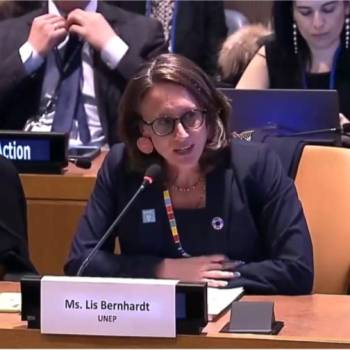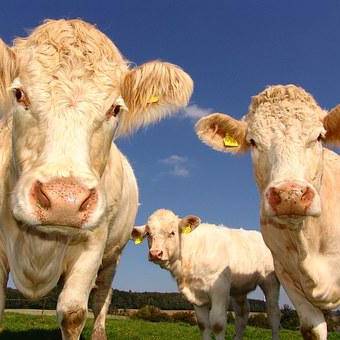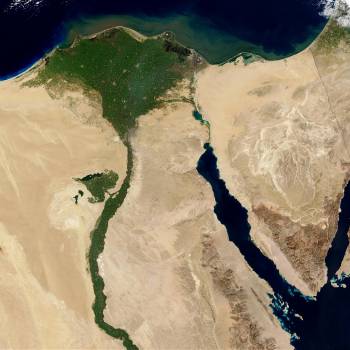
The consequences of extreme weather events and climate change, including megadroughts, extreme rainfall, land and sea heat waves and melting glaciers, are being felt in the Latin America and Caribbean region , from the Amazon to the Andes and from the waters of the Pacific and Atlantic oceans to the snowy depths of Patagonia.
The Report on the state of the climate in Latin America and the Caribbean in 2021 drawn up by the World Meteorological Organization (WMO) highlights the considerable repercussions of these phenomena on ecosystems, food and water security, human health and poverty.
The highest deforestation rates since 2009 have been recorded, representing a setback for the environment and for mitigating the effects of climate change. Andean glaciers have lost more than 30% of their area in less than 50 years. The “central Chile megadrought” is the longest recorded for at least a thousand years.
“This report shows that hydro-meteorological hazards, including droughts, heat waves, cold waves, tropical cyclones and floods, have unfortunately claimed the lives of hundreds of people, seriously disrupted agricultural production, damaged infrastructure and caused the displacement of populations", declared the WMO Secretary-General, Mr Petteri Taalas.
“Increasing sea level rise and ocean warming are expected to continue to undermine the livelihoods of coastal populations, as well as tourism, health, food, energy and water security, particularly in small islands and in Central American countries. For many Andean cities, melting glaciers represent the loss of an important source of fresh water currently used for domestic use, irrigation and hydroelectric power. In South America, the continued degradation of the Amazon rainforest remains a major concern for the region as well as for the global climate, given the role it plays in the carbon cycle,” Taalas added.
The report was released on the occasion of a regional technical conference for South American countries, organized by WMO in Cartagena, Colombia on July 22, 2022. This is the second year that WMO produces this regional report, intended to provide decision-makers with more localized information to guide them in their action. It is accompanied by an interactive image presentation.
“The worsening of climate change and the cumulative effects of the COVID-19 pandemic have not only impacted the region's biodiversity, but have also set back decades of progress in the fight against climate change. poverty, food insecurity and the reduction of inequalities in the region,” said Mario Cimoli of the Economic Commission for Latin America and the Caribbean (ECLAC).
“Addressing these interrelated challenges and their impacts will require acting together. However they are taken, the measures must be based on scientific data. The second Report on the State of the Climate in Latin America and the Caribbean is a source of essential scientific information for climate policy and decision-making. ECLAC will continue to actively disseminate this information to help build partnerships, improve climate services and strengthen climate policies in Latin America and the Caribbean,” he said.
Main conclusions:
- Temperature: The warming trend continued in 2021 in Latin America and the Caribbean. Between 1991 and 2021, the temperature increased by an average of 0.2°C per decade, compared to 0.1°C per decade between 1961 and 1990.
- Glaciers in the tropical Andes have lost more than 30% of their surface area since the 1980s, with a negative trend in mass balance of -0.97 m water equivalent per year during the monitoring period from 1990 and 2020. Some glaciers in Peru have seen their surface area shrink by more than 50%. The retreat of glaciers and the corresponding loss of ice mass have increased the risk of water scarcity for people and ecosystems in the Andes.
- Sea level in the region continued to rise at a faster rate than globally, especially along the Atlantic coast of South America south of the equator (3.52 ± 0.0 mm per year from 1993 to 2021), as well as in the subtropical North Atlantic and the Gulf of Mexico (3.48 ± 0.1 mm per year from 1993 to 1991). Sea level rise threatens much of the population, which is concentrated in coastal areas – contaminating freshwater aquifers, eroding shorelines, flooding low-lying areas and increasing risks storm surges.
- The “central Chile megadrought” continued into 2021 for the thirteenth consecutive year. This is the longest dry spell recorded in this region for at least a thousand years; it exacerbates an existing drying trend and puts Chile at the forefront of the region's water crisis. In addition, a multi-year drought in the Parana-La Plata basin, the worst since 1944, is affecting central and southern Brazil and parts of Paraguay and Bolivia.
- Damage to agriculture caused by the drought in the Parana-La Plata basin has caused a drop in agricultural production, particularly of soybeans and maize, and has had an impact on world agricultural commodity markets. Overall in South America, the drought has resulted in a 2.6% decline in the 2020-2021 cereal harvest compared to the previous season.
- In 2021, the Atlantic hurricane season ranked third in the number of named storms, as it recorded 21, including seven hurricanes. This is the sixth consecutive above normal hurricane season in the Atlantic. Some of these storms had a direct impact on the region.
- Extreme rainfall in 2021, which reached record levels in many places, led to flooding and landslides. The consequences of these phenomena have been catastrophic, since they have claimed hundreds of lives, damaged or destroyed tens of thousands of homes and caused the displacement of hundreds of thousands of people. Damage associated with floods and landslides in the Brazilian states of Bahia and Minas Gerais is estimated at US$3.1 billion.
- In Brazil, the rate of deforestation of the Amazon rainforest has doubled compared to the average recorded between 2009 and 2018, reaching its highest level since 2009. The forest area lost in 2021 exceeded the figure recorded in 2020.
- In Guatemala, El Salvador and Nicaragua, a total of 7.7 million people experienced high levels of food insecurity in 2021, notably due to the continued impact of hurricanes Eta and Iota in late 2020 and the economic impact of the COVID-19 pandemic.
- The Andes, northeastern Brazil and northern Central American countries are among the regions most susceptible to climate-related migration and displacement, which have increased in magnitude over the past eight years. Migrations and displacements of populations have multiple causes. Climate change and the extreme phenomena associated with it are amplifying factors, which exacerbate the underlying social, economic and environmental dynamics.
- South America is one of the regions most in need of strengthening early warning systems . Multi-hazard early warning systems are essential tools for effective adaptation in areas threatened by extreme weather, water and climate events.
Reasons for concern and knowledge gaps
Intergovernmental Panel on Climate Change (IPCC) Sixth Assessment Report shows precipitation patterns are changing, temperatures are rising and some regions are experiencing changes in the frequency and severity of weather events extremes such as heavy rain.
The two large oceans that border the continent – the Pacific and the Atlantic – are warming and acidifying from carbon dioxide, while sea levels are also rising.
Unfortunately, these impacts are likely to worsen in the region as the atmosphere and ocean continue to change rapidly. Water and food supplies will be disrupted. Cities and the infrastructure they need to function will be increasingly threatened.
The health and well-being of human populations, as well as natural ecosystems, will suffer the effects of these developments. The Amazon, northeastern Brazil, Central America, the Caribbean and parts of Mexico are likely to experience an increase in dry spells, while the impact of hurricanes could worsen in Central America and the Caribbean . Climate change threatens the vital systems of the region, such as the glaciers of the Andes, the coral reefs of Central America, the Amazon rainforest, which are already close to critical conditions and risk suffering irreversible damage.
In addition to the effects of the COVID-19 pandemic, the United Nations Office for Disaster Risk Reduction recorded in Latin America and the Caribbean a total of 175 disasters during the period 2020-2022, 88% of these phenomena being related to weather, climate and water. These hazards were the cause of 40% of deaths and 71% of economic damage associated with listed disasters.
Reducing the devastating effects of climate-related disasters and supporting resource management decisions and improving outcomes requires the establishment of climate services, end-to-end early warning systems and investments: all these conditions are not yet met in Latin America and the Caribbean.
It is essential to strengthen all components of the climate services value chain, including observing systems, data and their management, improving forecasts, strengthening meteorological services, climate scenarios, projections or even climate information systems.
Additional information:
WMO would like to express its gratitude to the specialists in its network who have worked tirelessly, with rigor and motivation, to give this report its full scientific value. We are particularly grateful to Mr. Jose Marengo of the Brazilian National Center for Monitoring and Early Warning of Natural Disasters, who edited the publication.
The information used in this report comes from a large number of National Meteorological and Hydrological Services (NMHSs) and associated institutes, as well as regional climate centres.
The following United Nations agencies and international and regional bodies contributed:
Economic Commission for Latin America and the Caribbean (ECLAC, or CEPAL in Spanish)
Food and Agriculture Organization of the United Nations (FAO)
United Nations Environment Program (UNEP)
United Nations Office for Disaster Reduction (UNDRR, formerly UNISDR)
United Nations Office for the Coordination of Humanitarian Affairs (OCHA)
United Nations Population Fund (UNFPA)
International Organization for Migration (IOM)
Intergovernmental Hydrological Program (IHP) of UNESCO
United Nations High Commissioner for Refugees (UNHCR)
UK Met Office
United States Oceanic and Atmospheric Administration (NOAA)
Global Precipitation Climatology Center (GPCC)
Space Geophysics and Oceanography Studies Laboratory (LEGOS)
Copernicus Climate Change Monitoring Service (C3S) of the European Center for Medium-Range Weather Forecasts (ECMWF)
International Center for Research on the El Niño Phenomenon (CIIFEN)
Caribbean Institute of Meteorology and Hydrology (CIMH)
National Natural Disaster Monitoring and Warning Center (CEMADEN)
Posted on 2022-08-02 17:30








Comments